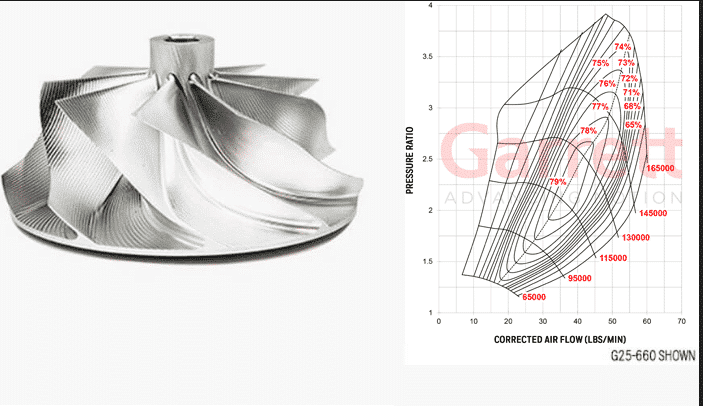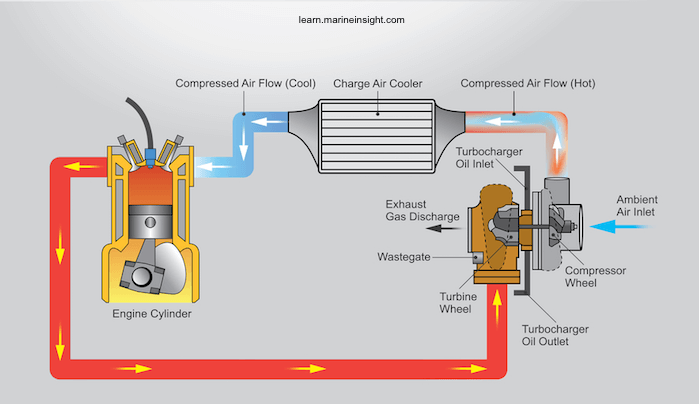Turbo Chargers 2 Stepp Install Driagram
Car turbo kits are widely available, and many people can install one in their car if they. The two main parts of a turbocharger are the turbine and the compressor. With the proper equipment, and careful study of the step-by-step instructions,.
Performance > Engine > LD9 2.4L Twin Cam > Forced Induction > Turbocharging > How-To: Install a Turbocharger Setup
|
The diagram may be available by an online search. If not, thenlook an a service manual, available in some library's or any autoparts.
Where do you find a diagram for vacuum lines for a V6 turbo?
Will a 2.2 liter turbo motor from a dodge daytona mount up to the tranny in a 1993 dodge caravan?
Where can you find a turbo hose diagram for a 1995 Skyline?
images.google.com ? you might want to try Vacuum diagram, and then Intake diagram. Depending on what exactly you're looking for.
Where can you find a vacuum line diagram for a 1990 Sunbird LE with a turbo 2.0?
I own a 1989 Sunbird GT turbo and the vacuume line diagram is located under the hood on the top left corner.
How do you get a diagram for all the little vacuum lines going to turbos and solenoids without numbered hoses on a twin turbo subaru b4 99?
A vacuum hose diagram, for your Subaru, can be obtained from most Subaru dealerships. The vacuum line diagram can also be obtained from most auto-parts stores.
Where can you find a vacuum diagram for a non-turbo 2.4L 1997 850?
You can find a vacuum diagram for your 1987 2.4 liter nonturbo engine in most service manuals. The service manuals can be found at your local library.
Can you turbo-charge a stock 92 dodge shadow?
you mean naturally aspirated ..and yes you can i have done this on my old dodge daytona you will need a complete turbo wiring harness,computer,and the head off another turbo dodge shadow you will also have to make a hole in the engine block for the oil-drainback tube from the turbo but in all honesty it would be less time consuming to just find a turbo shadow and move over everything that way everything fits… Read More
Does anyone have the diagrams for vacuum lines for an 88 supra turbo?
A Chilton's Automotive Repair manual will have a diagram for the vacuum lines for the 1988 Supra Turbo. This is an inexpensive manual when compared to the labor costs. It is about $25 at most automotive parts stores.
Need a vacuum routing for a 1988 Daytona Shelby Z Engine seems to bog down when idling may be from loss of vacuum?
actually needed more info so im gonna assume its turbo if not then its this one below
How do you find a free vacuum diagram for a Volvo 760 turbo?
Haynes Repair Manual for Volvo 760/740 has diagrams of the vacuum sub-systems.e,g. the EGR, the ignition etc
How do you remove turbo from Dodge Ram transmission?
Where do you find the vacuum diagram for a 1991 Nissan 300zx twin turbo?
Go to DTAmotorsports and download you a free service manual. http://dta-motorsport.com
How do you get vacuum lines attached on right for a 1983 280zx non turbo when you change heater ac control Have a factory manual but diagram is not correct?
Diagram for vacum line / heater lines for 1983 nissan 280z
Where can you find a vacuum line diagram for a 1987 Nissan 300ZX non-turbo?
If you really want to learn about your z go to eBay and buy you a CD that contains the repair manual. They are cheap. I have one for my 93z and it is great.
What is the top speed of a 1986 dodge Daytona z-turbo 2.2liter?
I had mine up to 100 MPH when I owned it in 1991-1992, just to see what the digital dash would do.
Can you put a turbo charger a on a dodge charger?
Turbo chargers and Super chargers will both fit on Dodge Chargers
How is the vacuum on a 89 ramcharger hook up?
Don't understand the question, all vacuum is taken from the intake manifold, what are you looking for. And is this a turbo or a none turbo
Where can you find a diagram for the vacuum system on 1990 Mitsubishi Eclipse 2.0 turbo?
I need one for a 93 and I can't find one anywhere some one should help please
Why might a 1986 Dodge Lancer be idling too fast?
the idle speed motor is stuck if it is a turbo, take it out, clean it and re-install, plus loosen tps screws, wiggle and re-tighten. if non turbo, probably vacuum leak at egr valve the idle speed motor is stuck if it is a turbo, take it out, clean it and re-install, plus loosen tps screws, wiggle and re-tighten. if non turbo, probably vacuum leak at egr valve
Where is the water pump located on a dodge daytona 2.5 liter turbo engine.. Water is dripping out very frequently right under where i think the water pump is loacated..?
It is the part under the alternator, right front corner.
Is a dodge stealth es turbo?
NO it's not a turbo, it has a 222horsepower DOHC motor.
What is the size of a turbo on a 1992 dodge ram turbo diesel?
What is Turbo Boosting?
Turbo Boosting, is when the turbo is flowing enough air that the manifold pressure swing from a vacuum to above atmospheric pressure(boost).
Where is stock turbo 1992 dodge stealth twin turbo?
Can you show me vacuum diagram for 1981 Nissan 280zx?
Nope, im looking for it also but for a Datsun 280ZX Nissan and Datsun are the same thing, however if you have the Chilton's Repair Manual for the NISSAN Z&ZX 1970-1988(which you should) I believe it's number 52800, you can find the vacuum diagram in section 4 page 26 That diagram is for a N/A 280ZX and only for the emmissions. I need a complete diagram for a 280ZX Turbo, 1981. I have the Automatic… Read More

Where is the vacuum modulator on a 1995 Chevy Silverado?
If your speaking of the vacuum modulator for the transmission, they no longer use them on the transmissions with overdrive and electronics. The powerglide, turbo 350 and turbo 400 used to use them.
Is a 2006 Dodge Magnum rt a turbo?
Where can you find a vacuum hose diagram for a 1987 Toyota Supra turbo?
I've Been Trying To Find This One For Weeks, Hope This Is What You Want. Just Highlight And Paste. opc.mr2oc.com/online_parts_catalog/1992_toyota_Vacuum_diagrams.pdf Regards M. R.
What is the vac pump on a Nissan 300ZX?
Answer Because of differences in the vacuum characteristics of a turbo and non-turbo 300ZX the turbo models (Z31 seriers anyway) have a vacuum pump added under the front bumper that comes on when sufficient vacuum is not available from the engine for only the following..water solenoid for heater, ac/heater controls, cruise control.
What is the firing order diagram on rs turbo?
Firing order on a ford escortfiesta rs turbo is 1342
Where are the vacuum lines located on a 1990 Nissan 300zx non-turbo?
V8 Single Turbo Diagram
You can find complete diagrams at http://www.CarGurus.com
Where can you get a complete wiring diagram for a 1985 Nissan 300ZX non-turbo?
try ebay, search 1985 300zx for the Nissan Service Manual, I have the 1986 manual , it contains the wiring diagram
I have an 1985 Dodge Daytona Turbo just had the engine rebuilt but am having an antifreeze leak and cannot figure out where it is coming from seems to be coming from above the valve covers any ideas?
Leaking coolant can be from many areas. On the 2.2 Turbo used in your Daytona, there isn't anything above the valve cover, but it could be leaking from the head/block mating surface, due to a blown headgasket or a warped cylinder head. Also the turbo vehicles have coolant feed and drain lines going to and from the turbo, checkout the connections on the turbo for leaks and also on the thermostat housing and the rear… Read More
Can you install a turbo into a 2008 dodge charger?
Both a Turbo and a Supercharger are relatively easy to install on the Chargers.
Does the dodge ram 1500 sport have a turbo?
What is the turbo on a 2006 dodge cummins?
Can you put a 1991 Dodge spirit turbo engine in a 1992 Dodge colt?
What are the release dates for Horsepower TV - 2006 Twin Turbo Dodge Challenger?
Horsepower TV - 2006 Twin Turbo Dodge Challenger was released on: USA: April 2010
Is there a non turbocharged dodge stealth?
Yes, there was the plain 3.0L, the 3.0L turbo, and the turbo all wheel drive.
Does the vacuum Modulator on the turbo 350 need to be hooked straight to manifold vacuum. Or can you use any vacuum port on the carb.?
It must be connected to a full-time vacuum source such as the intake manifold.
Can you Show me the diagram of a Mercedes turbo 300D vacuum connections?
Try http://www.mercedesshop.com/shopforum/showthread.php?t=105297 http://www.mercedesdismantlers.com/AutomaticTransmissionInformation.html http://ericandkat.com/mercedes/W123VacDoorLockDiag.doc http://www.peterschmid.com/vacuum/1980/617_950.jpg. Aws certified solutions architect pdf download free. http://www.performanceproducts4benz.com/Drawings.aspx?bmid=132 http://boostnbenz.1baddsm.com/DIY/Vacuum/ (Careful, some of these links are to www.ultrahot.com, and don't work)

Firing order on 4.9 Pontiac turbo?
printable diagram for firing order for 1980 trans am turbo 301 4.9 engine
What does hg stand for in a turbo meter?
A measurement of vacuum/pressure as in inches of mercury.
How do you check a Turbo a 1998 Dodge Ram 3500 5.9 Diesel?
How To Install A Twin Turbo
The best way to check your 1989 Dodge Ram 3500 5.9 liter diesel engine turbo is with a diagnostic tester. The diagnostic tester can tell you several things about the functioning of the Turbo.
What is trouble code P0299 on a dodge sprinter?
Where is wastegate on 2004 dodge 2500?
Will a 350 turbo swap out with a 700R4?
yes but the 350 turbo like the 400 turbo are vacuum run so you will need to tie into a vacuum line i put a turbo hydromatic 400 in my 1990 silverado that originally had a 700r4 it sucks not having overdrive but it will work also the output shaft is bigger so i needed a compatible transfer case in a 2wd this may not be a problem
How much power does a dodge stealth have?
225 hp for the es model (non turbo) 300 for the AWD twin turbo
Twin Turbo Installation Diagram
Can you put a turbo in a 2008 dodge charger?
Yes, you can put a turbo and a supercharger on the chargers. wear would i go to find out how
How do you change your 1993 dodge stealth sohc non turbo to a turbo?
a lot of time and money, or a mechanic is handy too